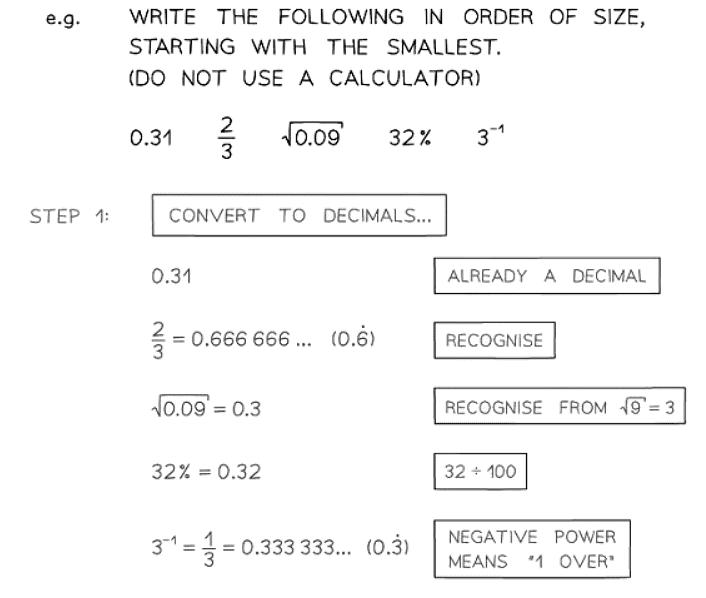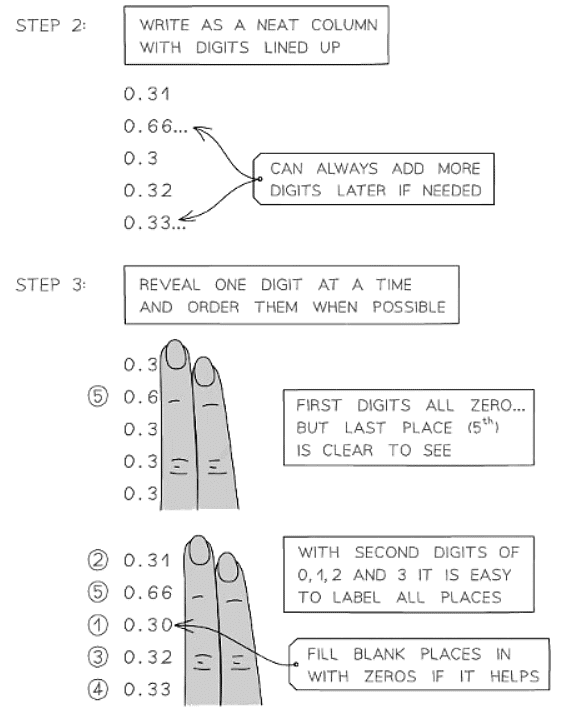Class 10 Exam > Class 10 Notes > Mathematics for GCSE/IGCSE > Ordering FDP
Ordering FDP | Mathematics for GCSE/IGCSE - Class 10 PDF Download
Ordering FDP
How do I put fractions in order of size?
- If comparing only fractions, write them over a lowest common denominator
- For
 the lowest common denominator of 5, 2, 20, and 12, the lowest common denominator is 60, so change them to
the lowest common denominator of 5, 2, 20, and 12, the lowest common denominator is 60, so change them to  then order them by their numerators
then order them by their numerators
- For
- From smallest to largest:

How do I put fractions, decimals, and percentages in order of size?
- If comparing fractions, write them over a lowest common denominator



The document Ordering FDP | Mathematics for GCSE/IGCSE - Class 10 is a part of the Class 10 Course Mathematics for GCSE/IGCSE.
All you need of Class 10 at this link: Class 10
|
38 videos|395 docs|19 tests
|
FAQs on Ordering FDP - Mathematics for GCSE/IGCSE - Class 10
| 1. How can I order fractions, decimals, and percentages from least to greatest? |  |
Ans. To order fractions, decimals, and percentages from least to greatest, first convert all numbers to the same form (e.g. fractions to decimals or percentages to decimals), then compare the values. Remember that 1/4 is greater than 1/5 because the denominator is smaller.
| 2. How do I compare fractions with different denominators when ordering them? |  |
Ans. To compare fractions with different denominators, find a common denominator by multiplying the two denominators together. Then, convert both fractions to have this common denominator before comparing them.
| 3. Can I simplify fractions before ordering them? |  |
Ans. Yes, you can simplify fractions before ordering them. Simplifying fractions can make it easier to compare and order them accurately.
| 4. Is it important to convert all numbers to the same form before ordering them? |  |
Ans. Yes, it is important to convert all numbers to the same form (e.g. fractions to decimals or decimals to percentages) before ordering them to ensure a fair comparison.
| 5. How can I ensure that I have correctly ordered fractions, decimals, and percentages? |  |
Ans. To ensure that you have correctly ordered fractions, decimals, and percentages, double-check your work by comparing each number to the others and confirming that they are in the correct order.
Related Searches















